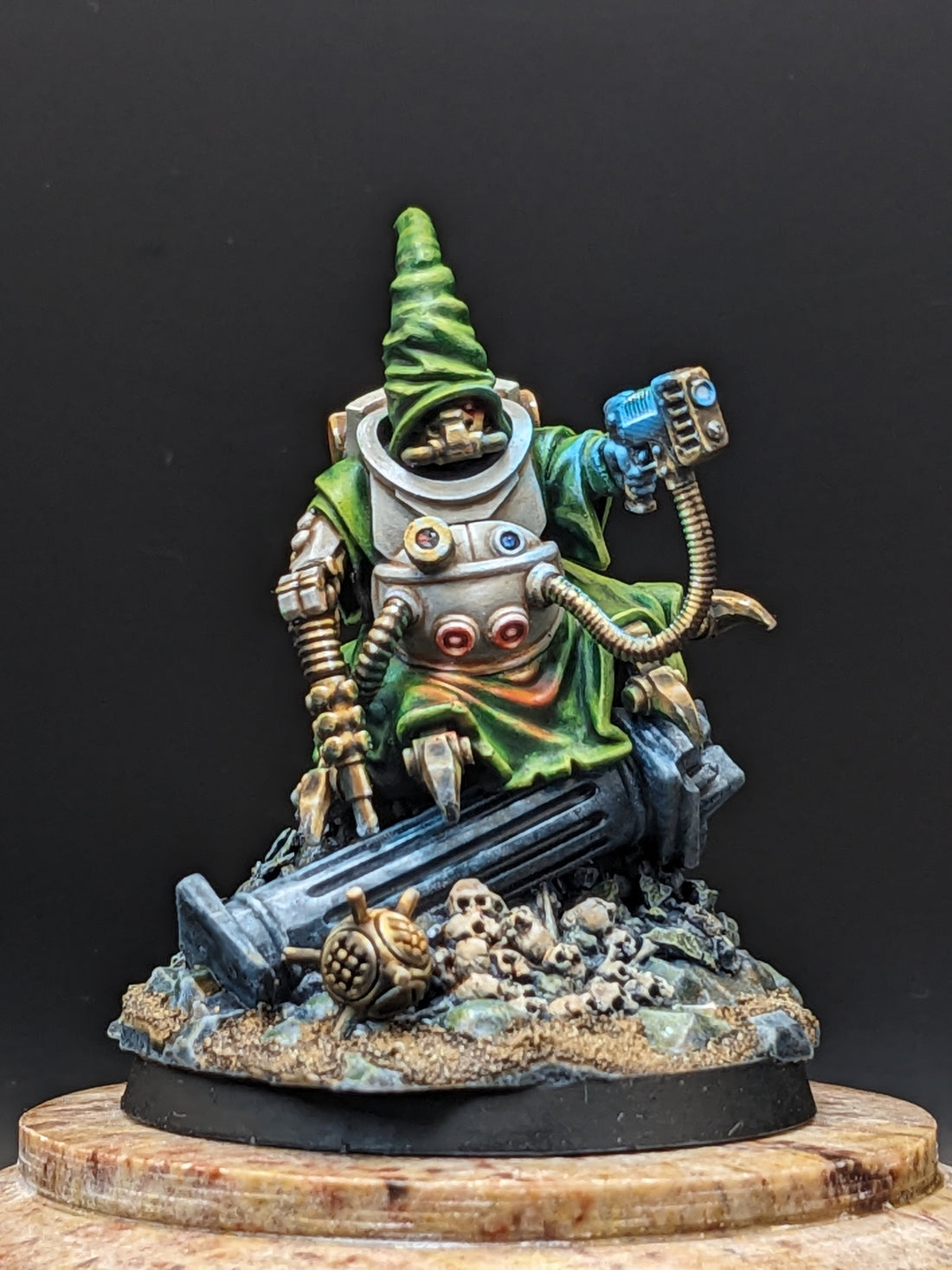
The Journey of Painting a Competition Miniature: The Good, the Bad, and the Self-Doubt
Share
Painting for a competition is like taking a rollercoaster with a paintbrush in hand—ups, downs, and that queasy feeling that hits right after you’ve made your fourth cup of coffee. I recently decided to push myself by entering my latest miniature into a competition, and let me tell you, the journey was... eventful.
The Big Idea

It all starts with a spark of inspiration. You know, that moment when you see the miniature and imagine how it’s going to look with that perfect paint scheme. For me, it was a little mechanicus-like model, lets call hum Bob, sharp lines, intricate armor, flowing cloak—the works. I had grand ideas of muted, earthy tones with flashes of red to draw the eye. “This is going to be my masterpiece,” I told myself. Spoiler alert: it did not go smoothly.
Basecoat Blues
The basecoat stage is meant to be easy, right? Slap on some primer, get the base colors down, and build from there. Well, it turns out picking a color scheme is like being handed a box of chocolates—you think you know what you’re getting, but sometimes it’s a disaster. That muted ceramic cream I envisioned? It looked more like my miniature was wearing a toilet bowl rather than some high tech armour.
Cue self-doubt number one: "Have I made the wrong choice already? Maybe I should just strip it down and start over."
But I didn’t. Instead, I pressed on.
Layering and Second-Guessing

I’m convinced layering is where the magic happens. This is where you can add depth, shadows, and highlights to really bring the figure to life. But it’s also where I start second-guessing myself.
"Is that highlight too sharp?" "Did I just make that armor look plastic instead of metallic?"
This is the stage where you hit what I like to call “the ugly phase.” If you’re like me, this is when your miniature looks worse than it did when it was primed. It's tempting to give up here. My desk had become a battlefield littered with paint pots, brushes, and my dashed hopes of winning anything at this competition.
Highlighting or Overthinking?
Edge highlighting is the point where I start to feel like a bit of a perfectionist—every little line needs to be just right. Bob's armor was getting that sharp edge highlight treatment, and I’ll admit, it was starting to look good. But then, of course, the overthinking kicked in. "Am I using the right technique? Is this the right thickness? Should I have gone for true metallics instead of non-metallic metal?"
Honestly, this is the part where I can drive myself mad. But I remind myself: it’s not about perfection—it’s about the process, right? Right.
The Finishing Touches

As the miniature neared completion, I could see the finish line. I focused on the little details—the eye, the light on the NMM, the subtle color variations on the cloak. But with each brushstroke, I questioned if it was enough. Was the miniature competition-worthy?
That’s the thing about entering competitions: it’s not just about painting a figure, it’s about battling your own insecurities along the way. And believe me, there were plenty of them. I found myself obsessively scrolling through Instagram, comparing my work to other painters and feeling that pang of “am I good enough?”
The End Result

In the end, I stepped back and looked at the finished piece. It wasn’t perfect—nothing ever is. There were things I could’ve done differently, colors I might have tweaked, techniques I could’ve polished further. But you know what? I was proud of it. This miniature was a representation of my growth, my persistence, and my ability to keep going even when self-doubt reared its ugly head.
Entering the competition wasn’t about winning (okay, maybe a little). It was about pushing myself, experimenting, and learning along the way. And that’s the beauty of painting miniatures—every piece teaches you something new, whether you end up with a trophy or not.
Would I do it again? Absolutely. Bob agrees.